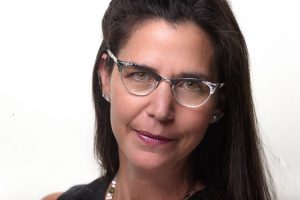


Latest news, alerts, and events.
Latest news, alerts, and events.
 The nonprofit sector is a fundamental component of a healthy democracy. We see the sector as the foundation for virtually all social and civil rights movements in our country. What starts as a grassroots voice grows to a movement and is most often sustained through the framework of the sector. The movements for civil rights, disability rights, women’s rights, and others all took hold in our sector. These issues continue to need our attention. They are amplified and joined now by new movements we recognize as #MeToo, #BlackLivesMatter, and in response to gun violence #NeverAgain, to name just a few.
The nonprofit sector is a fundamental component of a healthy democracy. We see the sector as the foundation for virtually all social and civil rights movements in our country. What starts as a grassroots voice grows to a movement and is most often sustained through the framework of the sector. The movements for civil rights, disability rights, women’s rights, and others all took hold in our sector. These issues continue to need our attention. They are amplified and joined now by new movements we recognize as #MeToo, #BlackLivesMatter, and in response to gun violence #NeverAgain, to name just a few.
It is no wonder that the fastest growing classification of nonprofits is 501(c)4, which gives organizations more ability to lobby and advocate with a stronger voice. These issues generate hot debate and can bring us together or fling us apart at merely the mention of the topic. One social media post can mean the difference these days between speaking your mind and creating an argument.
To speak up and join any one of these movements is more obvious for those with missions that directly tie to them – although one could certainly argue, as I would, that we are all tied to each of these issues whether we choose to acknowledge it or not.
But for a moment, let’s assume your organizational mission is distant enough from one or many of the current movements that you are not sure what to do. I know I have felt this tension. To say nothing feels complicit, but to stand for all of them feels ineffective. I wrestle, and I wonder if you wrestle, too, with when to use your “mission voice,” and when to speak up as an individual separate from mission. As an organization, we focus on some issues as part of our service delivery, but not as part of our public policy. For example, Foraker has been working for more than a decade to address sexual harassment in the workplace through our HR services, but so far it has not been one of our public policy priorities. As I note statements from highly regarded nonprofit institutions that are taking public policy stands on sexual harassment and other “greater good” issues, such as this one from the Association of Fundraising Professionals, I have thought more about when and how each organization decides when to engage with its “mission voice.” While organizations will have different thresholds for taking on issues as matters of public policy, I have appreciated when they are clear on how a particular movement connects to their work – where their voices are considered valued and important. If a group is going to take a step into the public policy sphere, then this seems like a critical piece of the equation – framing a position based on where one’s mission has impact and credibility.
That said, I want to offer a path toward at least a healthy discussion with your board and staff to determine why and when to use your organizational or “mission voice.” To be clear, I have no answers about what the result will be for you, and I also think it is not up to just you. The process must be a team effort, however you define that team. The voice of your mission is held in the public’s trust. It is different from your own voice. It is different than your own opinion. I know how I feel about each of the current movements today, but that doesn’t mean as Foraker’s CEO I have a right to use the platform of our mission to voice my opinion. Equally it means I have a responsibility to the mission to ask the questions about our role as an organization. As I have said many times in the last three years, we have an obligation as a sector to use our voice in the public policy sphere. It is not something that is “nice to do,” it is essential to do. To that end, here’s a process to help determine your next steps.
Ultimately our work in this sector – for board and staff – is to advance the work of mission. Each of our teams determines what that means. There will certainly be groups that say a particular civic and social issue is not their issue, and they put their heads down and focus. There will be others where every civic or social issue is their issue. And then there are likely many in the middle. For those in the middle, I welcome your ideas about your process through the six steps, along with any others you use. Tell us how you make decisions on when to use your “mission voice.”